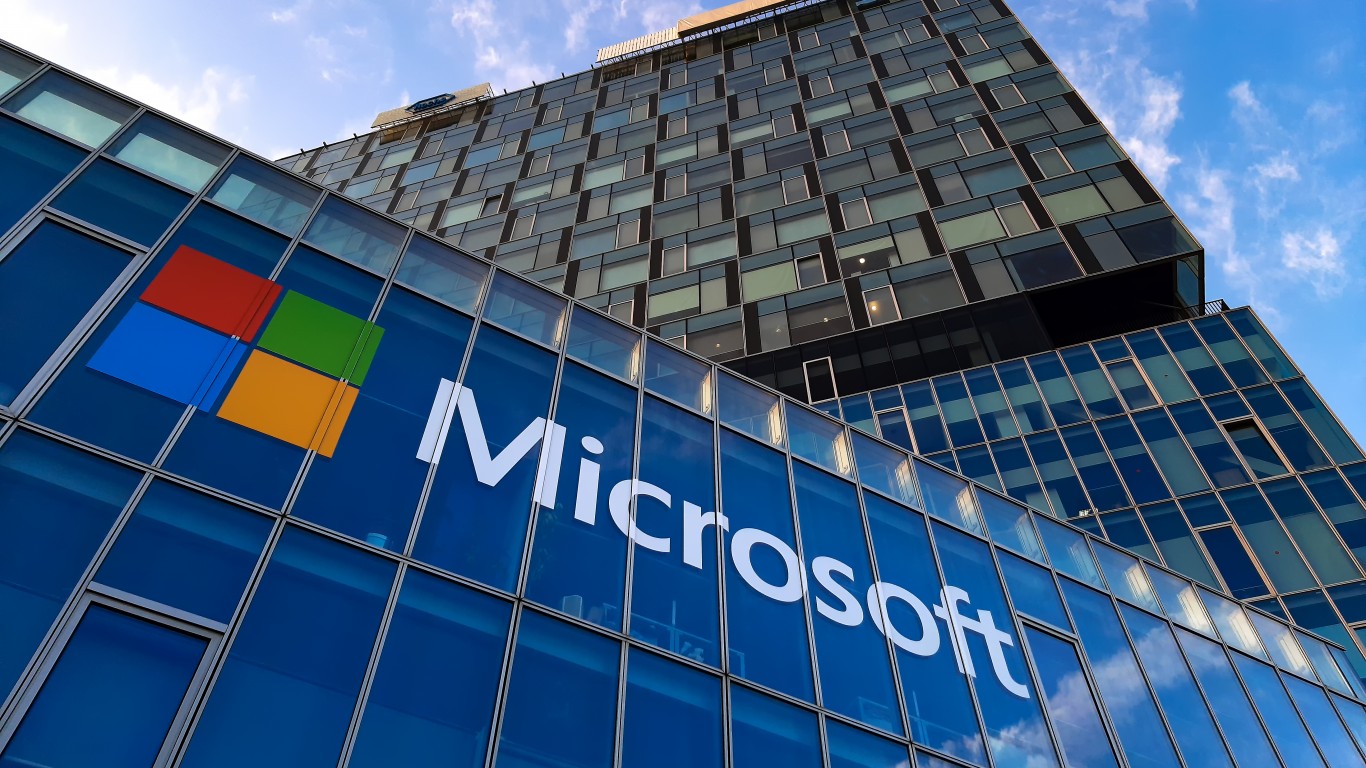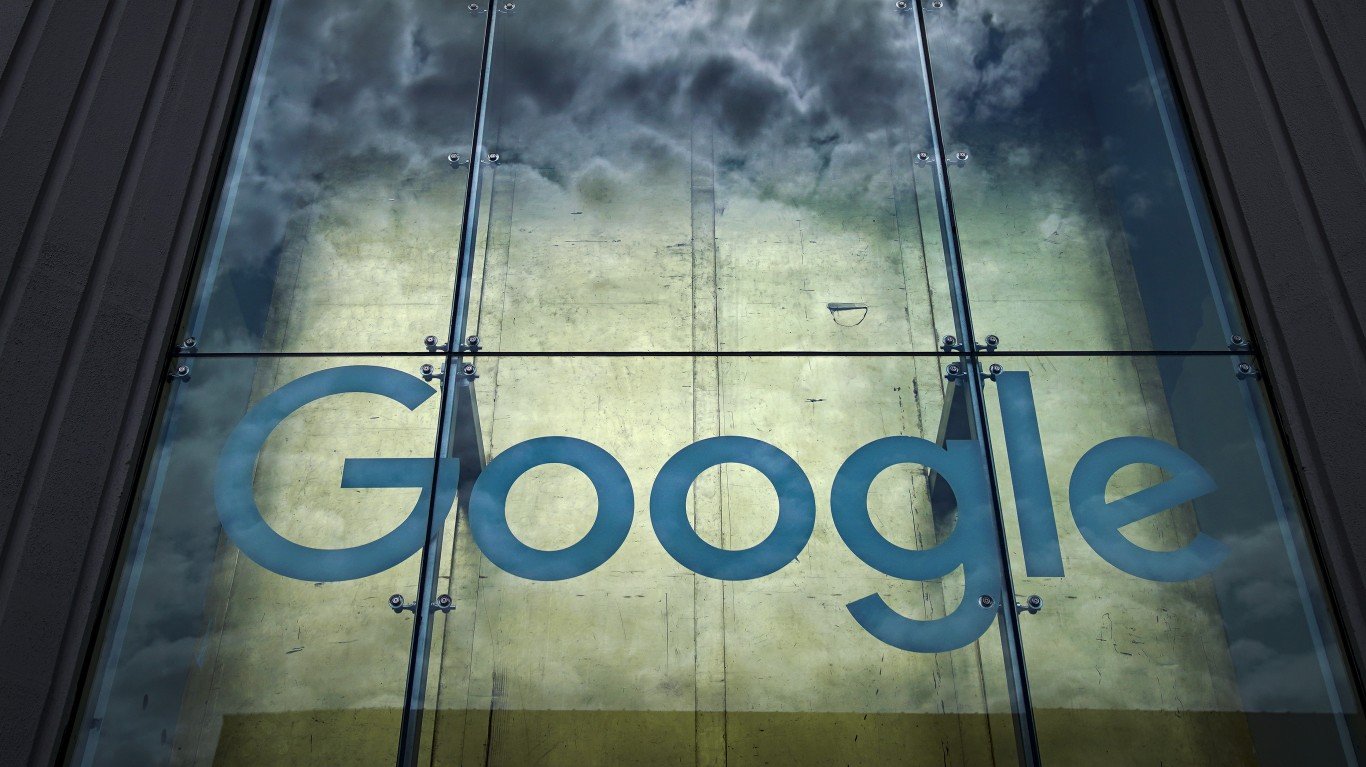

Apple Inc. (NASDAQ: AAPL) has recovered handily from its March lows as the market recovery has been strong. That said, Apple is running into headwinds that some investors may be ignoring concerning demand for its iPhone models. The COVID-19-induced recession took Apple’s factories down for part of the first quarter, but even as the suppliers and assemblies came back on, the stark weakness at the consumer level seems to be hurting demand for the iPhone.
It’s very possible that the iPhone for 5G is going to have a weak debut and it may be delayed. That might not be priced into the aggressive recovery that has outperformed the recovery in the S&P 500.
[in-text-ad]
24/7 Wall St. has seen multiple research calls pointing out that there is simply less demand for the iPhone than investors had expected. Even as Apple’s stock price was rising, many analysts have been cutting expectations and price targets.
Most indications point toward Apple’s supply chain being more or less back to normal. The new worry in a recession climate is that total iPhone model demand may be weak. Apple had extended its domestic store closures, and the number of unemployed people may be high enough that the 5G iPhone will be delayed later into the holiday season of 2020 or even into 2021. There is even expected to be weak PC demand in the year ahead.
Even Positive Analysts Have Brought Up Caution
One issue brought up by Wells Fargo’s Aaron Rakers came from the AT&T Inc. (NYSE: T) earnings report that has sent AT&T stock price lower. There was a record-low rate of 3% in postpaid smartphone upgrades during the first quarter of 2020. In short, analysts and investors alike may have had too much optimism over upcoming and existing unit sales for the iPhone. AT&T also pointed to weakness in mobility equipment revenue.
Wells Fargo’s view from April 22 is that the 41.1 million iPhone unit shipments are just too high. If customers are not able or willing to go into the stores to inspect and play with sample phones, it hurts sales. Wells Fargo’s model sees 36 million iPhone shipments, with the note also saying it could be in the low-to-mid 30 million range.
Nomura/Instinet issued a report on April 20 with a Neutral rating and a $240 price target that is handily under the current share price. The firm’s view is that the stock rallied too much after the March lows, at least that is what is implied when it pushed out expectations for the June quarterly orders out into the September quarter. Instinet’s Jeffrey Kvaal signaled that Apple reduced its iPhone 11/SE order volumes by approximately 20% for its third quarter (June).
Kvaal already has lowered its fiscal 2020 estimates, but the firm also lowered its fiscal 2021 estimates. That is bad news for the 5G iPhone and that iPhone elusive super-cycle. That report suggests that shipment times for the new iPhone SE are lengthening, while also noting that the pandemic impact is obscuring interpretive capabilities.
The biggest flash warning came from Goldman Sachs on April 17, when Apple stock was downgraded to Sell from Neutral and the price target was lowered to $233 from $250. What matters here, other than the Sell rating, is that this marked the third time that Goldman Sachs reduced its expectations since February 13.
Overall, Goldman Sachs has projected that iPhone unit demand will show a 36% decline in the second quarter. It also forecast a 24% decline in the first half of the calendar year 2020. Price weakness with lower average selling prices in a recession and much weaker travel demand also may all press a delay in Apple’s 5G smartphone launch.
While Daniel Ives of Wedbush Securities has retained an Outperform rating, he was ahead of other analysts lowering expectations for the iPhone demand and suggesting a delay on the upcoming 5G iPhone launch. Ives previously the lowered iPhone revenues estimate by 14% in fiscal year 2020 and lowered the figures by 10% for fiscal year 2021.
One of the fresh Wedbush reports said:
Under this current scenario we now conservatively assume only the installed base consumers currently in the window of an upgrade opportunity that have not upgraded their iPhones in more than 42 months purchase a new phone over the next 18 to 24 months. Currently we estimate that ~350 million of Apple’s 925 million iPhones worldwide are in this upgrade window, as we assume going forward in a more draconian scenario that minimal new smartphone activity takes place in the coming quarters.
[in-text-ad]
Some Apple Stock Analysts Remain Strong Fanboys
Evercore ISI recently issued a note that reiterated its Outperform rating and its $325 price target on Apple. The firm even laid out an upside case over time in which Apple could get to be a $500 stock worth well over $2 trillion. Amit Daryanani was focused on wearables and services seeing sustained double-digit sales growth, and an expected rise in margins on product sales would be a further driver to get much higher share prices over time.
Deutsche Bank has maintained its Buy rating on Apple on April 16, but raising the price target to $285 from $270 is just not typically enough upside to merit any expected strength.
Canaccord Genuity adjusted its iPhone expectations on April 14, but the firm still sees the new products and ecosystem sales helping to position Apple for a strong longer-term recovery. The firm reiterated its Buy rating and $300 price target in that call.
BofA Securities reiterated its Buy rating and $300 price objective, and it added Apple to the US 1 List of stocks to buy on April 9, but the firm’s Wamsi Mohan suggested delayed smartphone purchases globally. He now sees a longer upgrade cycle in smartphones, with users now planning to delay smartphone purchases in the COVID-19 recession even if the iPhone is the “stickiest” smartphone brand. Mohan also expects that iPhone demand should normalize around 200 million units per year after the COVID-19 dust settles.
The BofA investment rationale says:
We rate Apple a Buy as (1) valuation remains inexpensive, (2) cyclicality of product cycles is less material as revenues can grow on a consistent basis, (3) unit disclosure changes won’t matter in the L/T as the company pivots to a rev/user model and drives higher spend per user across all Apple devices/services, (4) loyal user base, (5) installed base of iOS still growing, (6) services penetration remains low, (7) demographic changes in Apple’s favor, and (8) strong FCF and capital returns.
Apple Stock Performance and Expectations
Apple shares traded up 2% at $273.75 on Wednesday. While it has a 52-week trading range of $170.27 to $327.85, the stock’s lowest level during the March panic selling was $212.61. That represents a recovery rally gain of 28% from the March 23 selling climax.
The Refinitiv consensus analyst price target is now down to $303.83. That consensus price target is still much higher than the $266.22 consensus price target at the end of 2019. Yet, the consensus is also down close to 10% from the peak when the COVID-19 recession had not kicked in and every investor was clamoring to own Apple stock.
The reality is that investors want to own Apple. It is one of the few mega-caps with a $1 trillion valuation, and the iPhone remains the premium smartphone to own whether there is a recession or not. Still, investors should keep in mind that, even as the price of Apple’s stock is recovering, the analyst expectations seem to keep falling rather than rising.
Adding up all the factors suggests that Apple investors should be expecting what could be a more volatile reaction, up or down, after its earnings report at the end of April.
Sponsored: Want to Retire Early? Start Here
Want retirement to come a few years earlier than you’d planned? Orare you ready to retire now, but want an extra set of eyes on your finances?
Now you can speak with up to 3 financial experts in your area for FREE. By simply clicking here you can begin to match with financial professionals who can help you build your plan to retire early. And the best part? The first conversation with them is free.
Click here to match with up to 3 financial pros who would be excited to help you make financial decisions.
Thank you for reading! Have some feedback for us?
Contact the 24/7 Wall St. editorial team.


